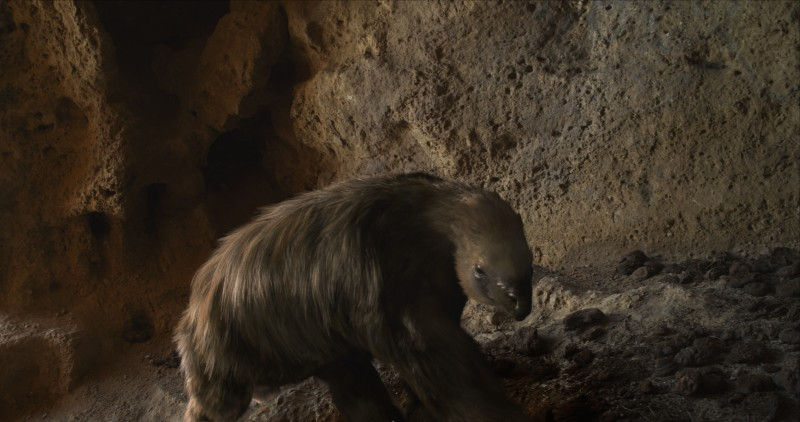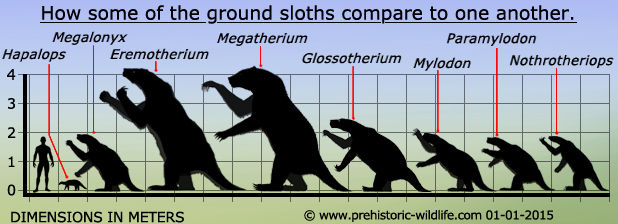
CREATURE-PEDIA
Ground Sloth




Did You Know?
Sid from Ice Age was a type of Ground Sloth called Megalonyx.
Ground sloths are a diverse group of extinct sloths, in the mammalian superorder Xenarthra. The term "ground sloth" is used as a reference for all extinct sloths because of the large size of the earliest forms discovered, as opposed to the extant "tree sloths." The earliest megatheriidae in North America was Eremotherium eomigrans which arrived 2.2 million years ago, after crossing the recently formed Panamanian land bridge. With more than five tons in weight, 6 meters in length, and able to reach as high as 17 feet (5.2 m), it was larger than an African bush elephant bull. Many experts believe that the giant ground sloth was a herbivore and that it fed on leaves found on low tree branches and bushes. The leaves that they commonly fed on were agaves, yuccas and common grasses. Most scientists believe that their diet consisted of leaves, grasses, insects, tubers, shoots, fruits and sometimes even carrion. There is evidence which suggests that they were, indeed, herbivores. They possessed large, sharp and very dangerous claws that were actually mainly used for stripping leaves and bark from trees. This evidence consists of the fact that their teeth were extremely small and blunt- not capable of cutting into the flesh of other animals that were smaller in size. The giant ground sloths used their simple teeth to grind the food that they bit into before swallowing it. Studies show that the sloth’s stomach was able to digest fibrous and coarse food. They usually lived in woodland or grassy areas in the South American region. Studies, which were conducted have shown that about 10,000 years ago, the megatherium ground sloth was actually an endemic species of South America. They, somehow, adapted to arid, temperate and semi-arid environments. Research has proven that the giant ground sloth existed mainly during the ice ages and there are a variety of theories concerning its extinction. One of the most popular theories is that it was basically the rapid climatic changes that killed them as they were not able to adapt quickly. Another theory is that hunters from Alaska killed them as they needed sustenance in order to continue their exploration of the North American region. Some scientists believe that the southern ground sloths were used to living among herbivores and had not learnt to watch out for dangerous carnivores while travelling north. Another hypothesis suggests that there may have been a terrible disease that affected all the giant ground sloths and killed them off slowly. However, none of these theories can be proved completely, beyond all possible doubt, as there were no reliable written records kept at the time by environmentalists or scientists.

